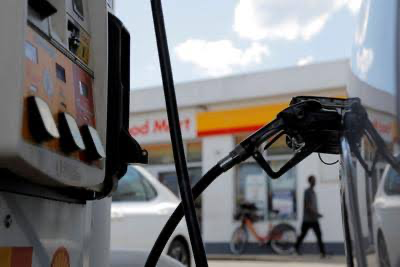U.S. refiners are facing a significant challenge as gasoline and diesel demand plummets to its lowest seasonal levels since the 2020 pandemic, according to data released by the Energy Information Administration (EIA) on Wednesday. This slump in demand is squeezing refining margins, threatening to disrupt two years of strong profits for refiners in the energy sector.
The EIA data shows a concerning trend, with the four-week average demand for gasoline standing at a meager 8.63 million barrels per day (bpd) for the week ending May 3rd. This represents the weakest demand recorded for this time of year since the coronavirus pandemic crippled transportation fuel consumption in 2020.
Distillate fuel demand, which includes diesel and heating oil, mirrored the decline in gasoline demand. The four-week average for distillate fuels settled at 3.60 million bpd, which is also the weakest seasonal level observed since the pandemic.
The reasons behind this slump in demand remain unclear. Some analysts believe it could signal a stagnation in economic activity, while others point to a growing shift towards renewable fuels displacing conventional fossil fuels.
“The weakness in gasoline demand is certainly cause for concern,” said Robert Yawger, an analyst at Mizuho. “If this is indicative of the overall health of the economy, then it’s a troubling sign.”
Refiners’ Margins Under Pressure
The decline in demand is wreaking havoc on refining margins, which are a key metric of profitability for refiners. The U.S. 3-2-1 crack spread, a closely watched indicator of overall refining margins, dipped below $26.50 per barrel on Wednesday for the first time since February. This marks the lowest spread observed for this time of year since 2021.
The spread between U.S. gasoline futures and U.S. crude oil has also contracted significantly, narrowing to its weakest point since February. The diesel crack spread also hit a one-year low of around $23 per barrel earlier this month.
Compounding the woes of refiners, U.S. gasoline and distillate stockpiles rose unexpectedly last week. This surprised analysts who had anticipated a decline in stock levels based on a Reuters poll. Gasoline inventories climbed by 915,000 barrels to 228 million barrels last week, reaching the highest seasonal level since 2021. Distillate fuel oil stocks also increased by 560,000 barrels to 116.4 million barrels in the week ended May 3rd, marking the highest seasonal level in three years.
The Road Ahead for Refiners
The confluence of weak demand and rising stockpiles is exerting significant pressure on refining margins, casting a shadow over the future profitability of the refining sector. Industry experts are watching closely to see if this is a temporary blip or a sign of a more long-term trend.
If demand remains sluggish, refiners may be forced to cut production or even idle refineries altogether. This could lead to higher gasoline prices at the pump for consumers. Additionally, a prolonged slump in refining margins could discourage investment in new refining capacity, potentially impacting future gasoline supplies.
The coming months will be crucial for the refining sector. How refiners respond to this downturn in demand will determine their financial health and the future landscape of the U.S. gasoline market.
Source: Reuters



